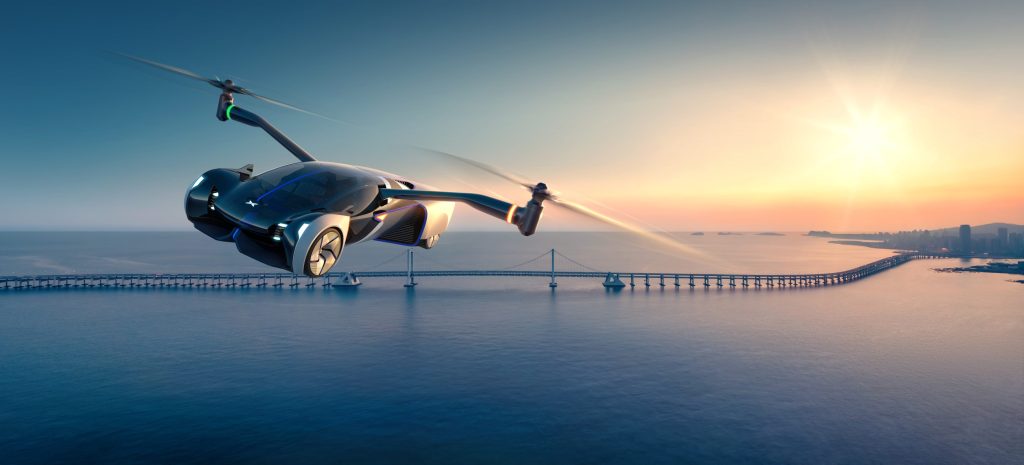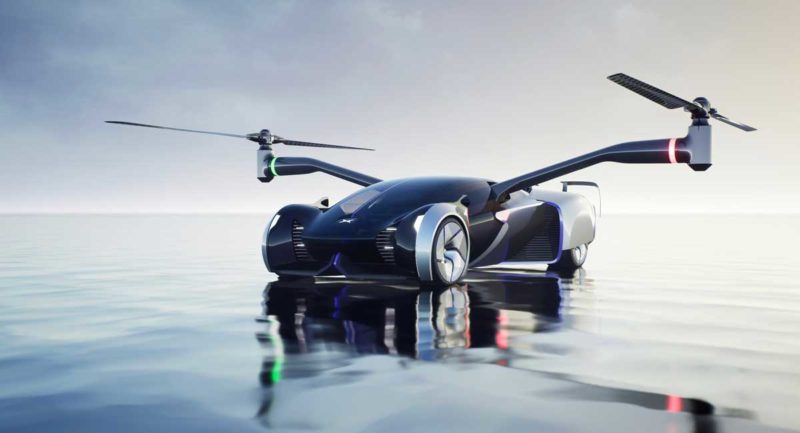Chinese EV maker Xpeng says it wants to sell a flying electric car with a price tag of less than 1 million yuan ($A210,000 converted), and start mass producing them by 2024.
New energy vehicles (NEV) will make up over 50% of new vehicle sales in China by 2025, according to chair and CEO He Xiaopeng, and he says that by 2040 some 10-15% of the population will be travelling regularly in flying cars.

Resembling an oversized drone, a representation of the planned flying car was revealed during the EV maker at its third “Xpeng 1024 Tech Day” broadcast on Sunday (China time).
The eight-year old company has sold more than 56,000 EVs in China to date in 2021, has two EV models (the P7 long-range sedan and the G3 SUV) on the market and recently unveiled a budget P5 sedan that is priced from just 157,900 yuan (about $A33,000 converted).
But it is the successor to its X2 fifth-generation flying car developed by subsidiary HT Aero, that Xiaopeng hopes will take to the skies within three years, thanks to a recent funding round to the tune of $US500 million ($A670 million).
Admitting the design is far from finalised (and that he’d prefer a design that was more “low-key”), Xiaopeng showed off a rendered video of the planned flying car at Sunday’s Tech Day and said that it would have a top speed of 130km/hr, four batteries, and two motors.
Made from lightweight materials such as carbon fibre, it would be able to carry a top weight 200kg and be able to take off freely whenever it was safe to do so.
This will require considerable room, however. With multiple rotors that fold out in preparation for flight, the flying car would have a total wingspan of around 7 metres. Takeoffs in bumper-to-bumper traffic would not be possible, warned Xiaopeng.
The concept of low-altitude flying cars seems far-fetched, and Xiaopeng took pains to underline the considerable regulatory requirements that would be needed make flying cars a reality.
Noting that HT Aero has already conducted more than 15,000 safe flights in its various flying car incarnations, he believes that, at first, they should not be allowed to fly at night in case of collision with electricity lines, for example.
In order to make the experience of flying a car more accessible, the EV maker says it has designed a “steering stick” that integrates all the necessary controls of an aircraft into one.
In addition to the plan to sell flying cars by 2024, Xpeng – like Tesla – also has plans to enter the robotic assistant market, albeit with a dog-like format instead of its rival’s humanoid Teslabot plans.
The company also outlined its new Xpilot 3.5 driver assistance system, which will build on its already well-adopted Xpilot 3.0 that it says has 60% takeup by its customers.
Equipped with LiDAR and millimeter-wave radar sensors, Xpilot 3.5 will roll out in the first half of 2022 and will be followed by Xpilot 4.0 which it describes as “full-scenario advanced point-to-point driver assistance”.
The EV maker will also roll out a network of 480kW charging capable of charging EVs with 200km extra driving range in five minutes, Xiaopeng said.







